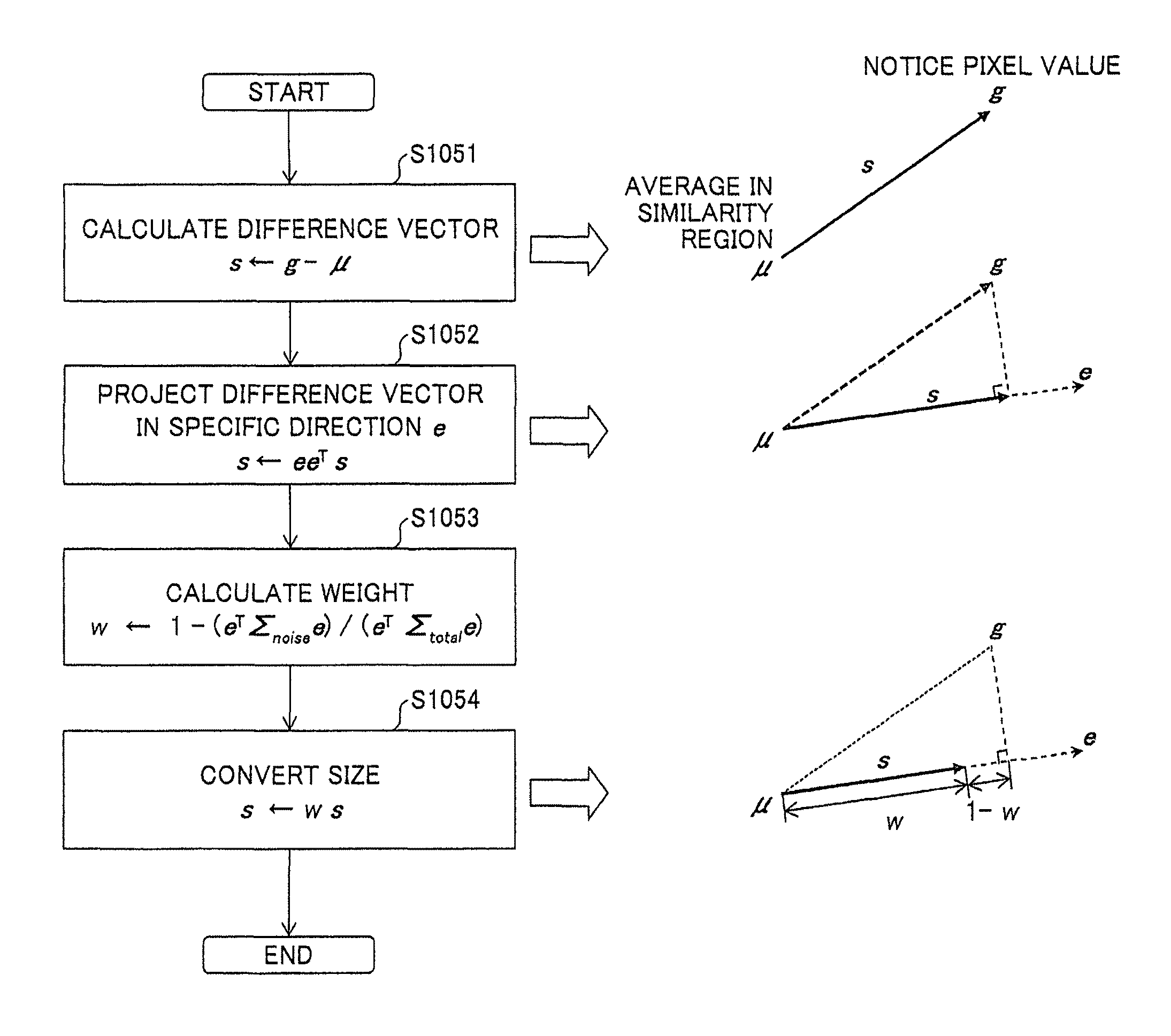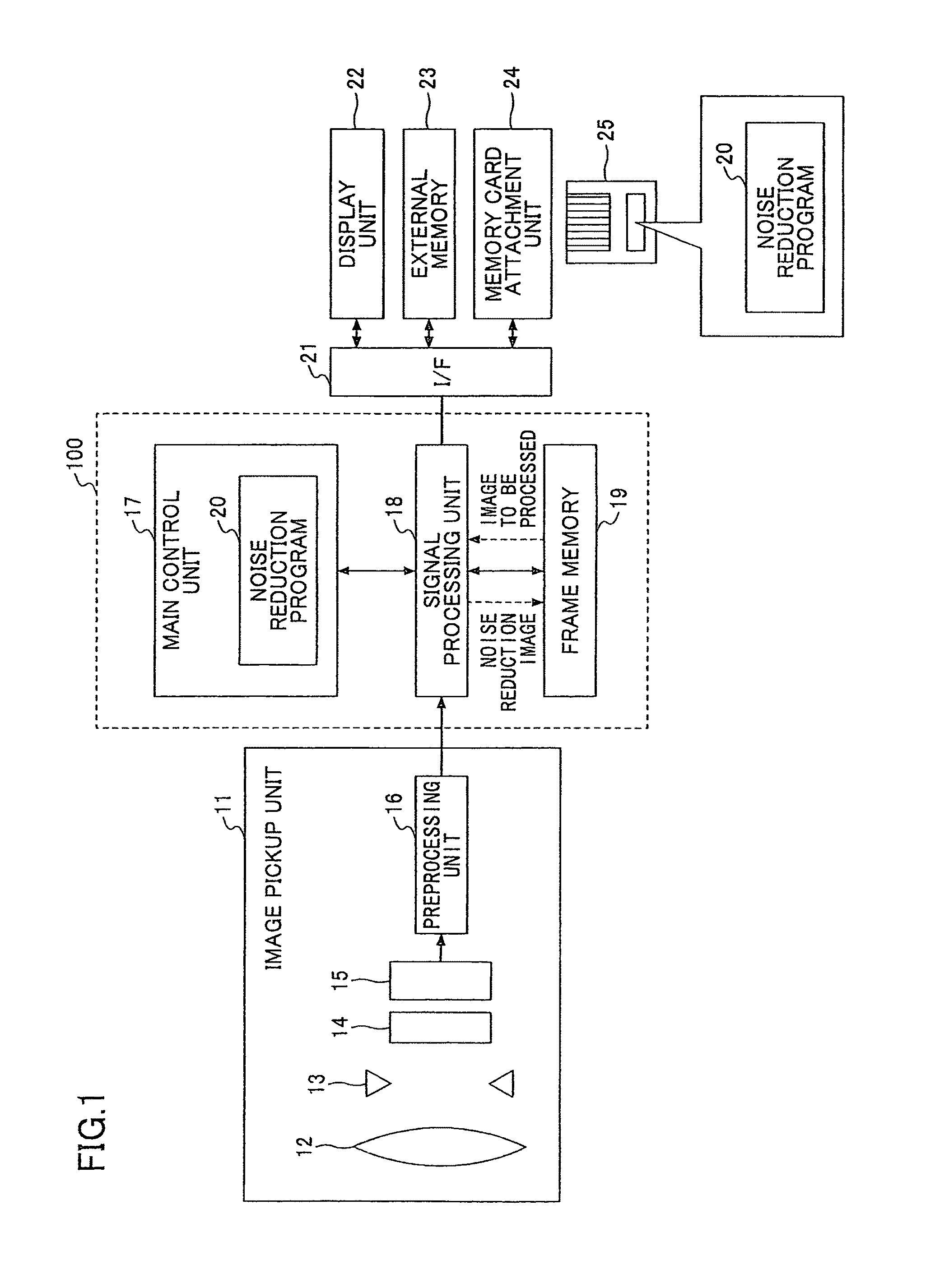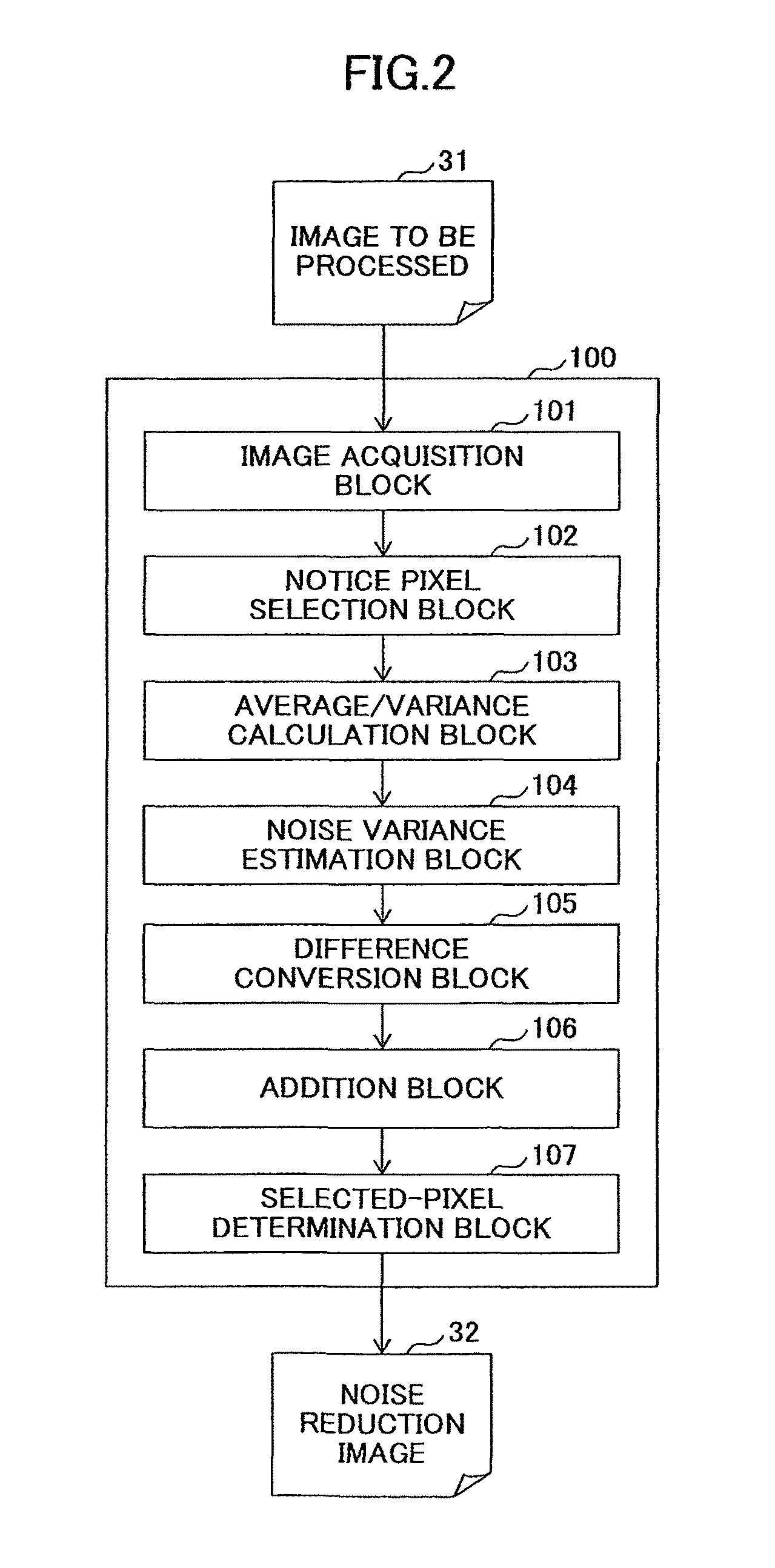Noise reduction device, noise reduction method, noise reduction program, and recording medium
a noise reduction and noise reduction technology, applied in the field of noise reduction devices, noise reduction methods, noise reduction programs, and recording media, can solve the problems of thermal noise, digital camera noise, and degradation of image quality, and achieve the effect of reducing non-additive noise in color images, reducing noise, and high accuracy
- Summary
- Abstract
- Description
- Claims
- Application Information
AI Technical Summary
Benefits of technology
Problems solved by technology
Method used
Image
Examples
first embodiment
[0038]This embodiment refers to a noise reduction device 100 that reduces non-additive noise, whose intensity depends on a signal value, in color images where each pixel has three components of R, G, and B. In the following description, a signal value is called a pixel value as occasion demands. The noise reduction device 100 of this embodiment can preferably be applied to digital cameras, scanners, and mobile phones with cameras so long as they pick up color images. In addition, noise reduction processing of this embodiment can be applied to color images read out from storage media by computers and acquired via networks.
[0039]FIG. 1 shows an example of a schematic configuration diagram of a digital camera. The configuration of the digital camera may be of a typical type. The digital camera has, for example, an image pickup unit 11 that picks up images; a signal processing unit 18 that applies processing to image signals acquired from the image pickup unit 11; a main control unit 17...
second embodiment
[0102]In the first embodiment, the difference vector s is projected in the specific direction e and added to the average-value vector μ of the similarity region. In this embodiment, when an average constant RGB ratio direction of the similarity region is used as the specific direction e, the specific direction e is the same as the direction of the average-value vector μ of the pixels of the similarity region.
[0103]FIG. 10A shows a relationship between the specific direction e and the constant RGB ratio direction. In other words, the direction of the average-value vector μ coincides with the specific direction e. Accordingly, the processing of projecting the difference vector s in the constant RGB ratio direction and adding the same to the average-value vector μ of the pixels of the similarity region is equivalent to the processing of multiplying the average-value vector μ by a scalar.
[0104]Based on this fact, this embodiment refers to the noise reduction device 100 that substitutes ...
second embodiments
Equivalence Between First and Second Embodiments
[0114]In the second embodiment, it is described that when the constant RGB ratio direction is used as the specific direction e, the multiplication of the average-value vector μ of the similarity region by the multiplication number η is equivalent to the processing of projecting the difference vector s in the specific direction e and adding the same to the average-value vector μ of the similarity region. A reason for this equivalency between them is described below.
[0115]The processing of the first embodiment can be expressed by the following formula.
[0116]f=μ+(1-v)μμTμ2(g-μ)(6)
[0117]The formula (6) represents the processing of linearly converting the difference vector “g−μ” and adding the same to μ. Note that v is explained in the formula (5).
[0118]The right side of the formula (6) can be converted as follows.
[0119]RIGHTSIDEOFFORMULA(6)=vμ+(1-v)μμTμ2g={v+(1-v)μTgμ2}μ(7)
[0120]In the formula (7), μ is multiplied by a coe...
PUM
 Login to View More
Login to View More Abstract
Description
Claims
Application Information
 Login to View More
Login to View More - R&D
- Intellectual Property
- Life Sciences
- Materials
- Tech Scout
- Unparalleled Data Quality
- Higher Quality Content
- 60% Fewer Hallucinations
Browse by: Latest US Patents, China's latest patents, Technical Efficacy Thesaurus, Application Domain, Technology Topic, Popular Technical Reports.
© 2025 PatSnap. All rights reserved.Legal|Privacy policy|Modern Slavery Act Transparency Statement|Sitemap|About US| Contact US: help@patsnap.com



